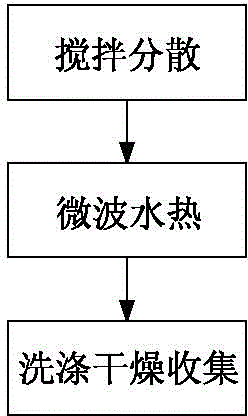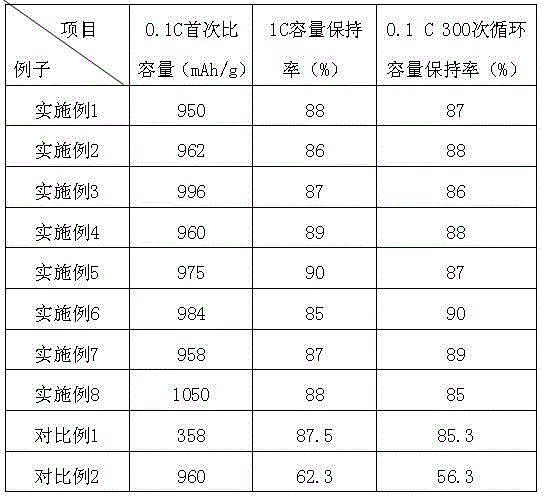Germanium-graphene composite cathode material for lithium ion battery and preparation method thereof
A graphene composite and lithium-ion battery technology, applied in battery electrodes, circuits, electrolytes, etc., can solve the problems of difficult large-scale industrialization and high energy consumption, and achieve the effects of sufficient conductivity, low energy consumption, and high rate
- Summary
- Abstract
- Description
- Claims
- Application Information
AI Technical Summary
Problems solved by technology
Method used
Image
Examples
preparation example Construction
[0020] The preparation method of the lithium-ion battery germanium-graphene composite negative electrode material is as follows: comprising the following steps:
[0021] (1) Stir to disperse
[0022] 20-80 parts by weight of germanium powder, 20-80 parts by weight of germanium dioxide powder, 1-20 parts by weight of graphene powder and 100-1000 parts by weight of distilled water were ultrasonically stirred in a mixer for 5-30 minutes. In this embodiment , the purity of the germanium powder and germanium dioxide powder is above 99.99%, and the graphene is obtained by redox method, mechanical exfoliation method, epitaxial growth method, chemical vapor deposition method, electrochemical method or arc method.
[0023] (2) Microwave water heating
[0024] The liquid obtained in step (1) is transferred into a hydrothermal reaction kettle with a Teflon lining, and treated in a microwave hydrothermal reaction apparatus at 100-300° C. for 10-100 minutes.
[0025] (3) Wash and dry col...
Embodiment 1
[0029] (1) Stir to disperse
[0030] 20 parts by weight of germanium powder, 70 parts by weight of germanium dioxide powder, 10 parts by weight of graphene powder and 500 parts by weight of distilled water were ultrasonically stirred in a stirrer for 5 minutes.
[0031] (2) Microwave water heating
[0032] The liquid obtained in step (1) was transferred to a hydrothermal reaction kettle with a Teflon lining, and treated in a microwave hydrothermal reaction apparatus at 100°C for 10 minutes.
[0033] (3) Wash and dry collection
[0034] The product obtained in step (2) was collected by filtration, washed twice with deionized water and ethanol, and then dried at 80 °C for 5 h in a desiccator to obtain a germanium-graphene composite negative electrode material.
Embodiment 2
[0036] (1) Stir to disperse
[0037] 32 parts by weight of germanium powder, 69 parts by weight of germanium dioxide powder, 15 parts by weight of graphene powder and 600 parts by weight of distilled water were ultrasonically stirred in a stirrer for 10 minutes.
[0038] (2) Microwave water heating
[0039] The liquid obtained in step (1) was transferred to a hydrothermal reactor with a Teflon lining, and treated in a microwave hydrothermal reactor at 120°C for 30 minutes.
[0040] (3) Wash and dry collection
[0041] The product obtained in step (2) was collected by filtration, washed repeatedly with deionized water and ethanol three times, and then dried in a desiccator at 50°C for 6 h to obtain a germanium-graphene composite negative electrode material.
PUM
| Property | Measurement | Unit |
|---|---|---|
| purity | aaaaa | aaaaa |
Abstract
Description
Claims
Application Information
 Login to View More
Login to View More - R&D
- Intellectual Property
- Life Sciences
- Materials
- Tech Scout
- Unparalleled Data Quality
- Higher Quality Content
- 60% Fewer Hallucinations
Browse by: Latest US Patents, China's latest patents, Technical Efficacy Thesaurus, Application Domain, Technology Topic, Popular Technical Reports.
© 2025 PatSnap. All rights reserved.Legal|Privacy policy|Modern Slavery Act Transparency Statement|Sitemap|About US| Contact US: help@patsnap.com


